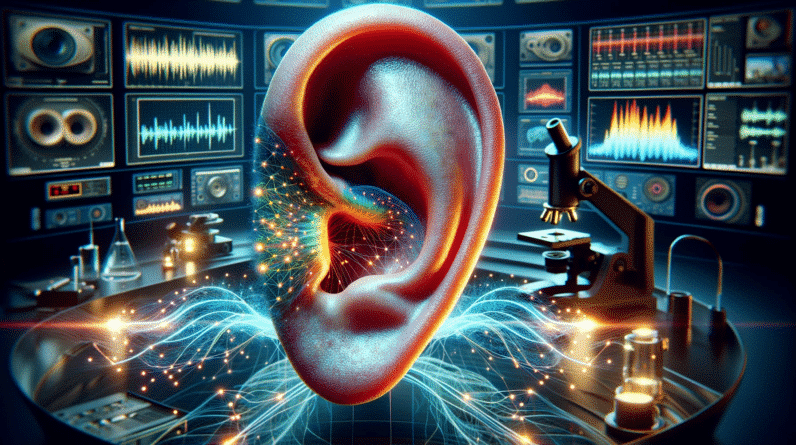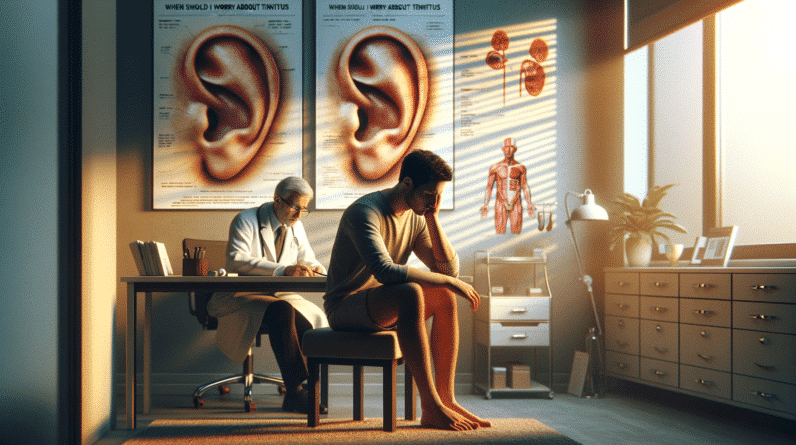We may earn money or products from the companies mentioned in this post.
As an Amazon Associate I earn from qualifying purchases.
Are you familiar with Visual Snow and Tinnitus? If not, you might be surprised how these sensory disorders, often misunderstood, can affect our lives. Let’s journey into the heart of these health nuisances and discover their causes, effects, and possible remedies.
Introduction
Visual Snow and Tinnitus: these terms might sound foreign to some, but they paint a vivid picture of what many people around the globe deal with daily.
Visual Snow, in simple layman’s terms, is a rare eye condition where people see snow or television-like static in parts or the whole of their visual fields. It’s like a constant interference in the visual field, similar to the image noise on an old-fashioned television screen.
Tinnitus, on the other hand, is a condition often described as a constant ringing in the ears, even when no sound is present. It can often be described as buzzing, roaring, or even chirping sounds. It can be low-pitched or high-pitched, and might be heard in one or both ears. No doubt, it’s disconcerting having to deal with such disruption, particularly when it’s constant. A deeper insight into Understanding Tinnitus is necessary to grasp how it impacts lives.
Deconstructing the Symptoms of Visual Snow and Tinnitus
While neither Visual Snow nor Tinnitus typically poses a direct threat to one’s life, they aren’t conditions to be overlooked either. To come to grips with these phenomena, it’s essential to delve into their symptoms and impacts on our daily lives.
Visual Snow and Tinnitus actually share some common characteristics. For instance, these conditions don’t just cause “snowy” vision or “ringing” in the ears. They can lead to a host of other symptoms including migraines, trouble focusing, and sensitivity to light and sound.
Oddly enough, Visual Snow has also been associated with Tinnitus, because both occur due to neuronal hyperactivity in the brain. This neuronal hyperactivity triggers a perception of Tinnitus Symptom Of Hearing Loss or the perception of Visual Snow, even in the absence of actual sound or visual stimuli.
This brings us to the pertinent question: Does Noise-Induced Tinnitus Go Away?
Noise-Induced Tinnitus can indeed fade over time. The severity, duration, and the type of noise can all determine how it impacts the person. This is precisely why comprehension and early diagnosis are of the utmost importance. Rest assured, these are not conditions to be feared, but rather understood and managed well. With the right strategies in place, one can lead a peaceful and normal life, keeping these sensory nuisances at bay!
Visual Snow – A Detailed Review
Now that we have a basic understanding of the two conditions at hand, let’s take a closer look at Visual Snow. Many people describe Visual Snow as looking at a snowy/static television screen, hence the name. Starting with general fuzziness, it progresses into a more persistent visual display of moving dots, which occur even with closed eyes. It disrupts not only one’s ability to focus visually, but it can also be quite unsettling psychologically.
It’s indeed essential to explore the Facts About Tinnitus, but one unique factor often overshadowed is the connection between Tinnitus and Visual Snow. One of these overlooked relationships is onsets at a certain age. In particular, many reported cases show a link between the Tinnitus Age 30 onset and the beginning of Visual Snow. An understanding of these intersections can provide a deeper insight into these conditions, aiding in better management and treatment.
Tinnitus – An In-depth Analysis
Tinnitus, often simplified as a persistent ringing in the ears, can be more intrusive than we realize. The sufferer may hear sounds, such as buzzing, humming, roaring, or whistling, which aren’t present externally. It’s as if one has their own persistently playing orchestra!
What’s puzzling about Tinnitus is its irregularity. For some, Tinnitus Comes And Goes, leading to unpredictability and increased stress. People suffering from the condition frequently report a fluctuation in their symptoms.
The answer to easing Tinnitus lies in soothing the brain. One such method is using White Noise and Tinnitus treatments. White Noise Therapy is a common method to “drown” the internal sounds that Tinnitus causes, providing temporary relief to the constant ringing.
The Overlapping Symptoms of Visual Snow and Tinnitus
Given their unseeable nature, it may be surprising to find numerous overlapping symptoms between Visual Snow and Tinnitus. For example, patients often report experiencing migraines, light sensitivity, and in some cases, even hearing loss.
The common link between the two disorders seems to lie in the brain. Both Visual Snow and Tinnitus are thought to be neurologically based conditions, possibly associated with the malfunction of processing sensory input.
Deep-diving into the shared symptoms of Visual Snow and Tinnitus, such as sensitivity to light and auditory hallucinations, provides an improved understanding of these uncommon sensory disorders. Meanwhile, it allows for the development of strategies that can alleviate the shared symptoms.
Notably, exploring these elements is crucial for one’s overall well-being. While they might not pose severe health threats, being aware of these conditions and their attributes equip us better to cope, manage, and lead an optimized life – free of unwelcome sensory disruptions.
Differentiating Between Visual Snow and General Fuzz Tinnitus
Even though we’ve highlighted the connections between Visual Snow and Tinnitus, it’s critical to understand they are indeed separate conditions. People often confuse Visual Snow Tinnitus and General Fuzz Tinnitus, as both involve sensory disturbances. However, the experiences and impacts differ significantly.
Visual Snow Tinnitus implies an overlay of Tinnitus symptoms onto Visual Snow, thus experiencing both auditory and visual interferences. However, General Fuzz Tinnitus refers to a buzzing or fizzy sound heard, presumably due to some neural hyperactivity. The key to distinguishing them lies in the sensory domain they primarily affect. Consequently, the treatments for each also differ, and understanding this difference can significantly aid in alleviating discomfort or stress from these conditions.
Coping Strategies for Visual Snow and Tinnitus
For those living with Visual Snow or Tinnitus, the daily grind can seem daunting. However, practical coping strategies can significantly help manage these conditions and improve the quality of life.
Did you know specific sounds, like the soothing sounds the American Tinnitus Association Sounds provides, can help mask the ‘phantom’ noises of Tinnitus? And for those Visual Snow, creating a visual-friendly environment, such as dimming lights and reducing screen time, can alleviate discomfort.
Moreover, priority should be given to ensuring you get proper support via health check-ups. The tests for tinnitus can help its detection early on, making it more manageable.
Conclusion
As we wrap up, it’s clear that understanding Visual Snow and Tinnitus is crucial, especially as these two sensory disorders can overlap and cause considerable discomfort. We’ve delved into their distinct and similar characteristics, implications, and even acquainted with coping strategies.
Even if they don’t pose a severe health threat, awareness about these sensory disruptions becomes vital for better management and mental peace. Early detection, accurate diagnosis, and appropriate coping strategies can indeed lead to an improved quality of life amid the ‘snow’ and the ‘ringing.’ Remember, the journey begins with awareness, so we are one step closer to better handling Visual Snow and Tinnitus today.
Visual Snow And Tinnitus - Frequently Asked Questions (FAQ)
Visual Snow is a rare condition where people see snow or television-like static in parts or the whole of their visual fields. It’s often compared to watching a grainy television screen and can cause other vision problems like light sensitivity.
Tinnitus is a condition described as a constant ringing in the ears, even when no sound is present. It can be triggered by numerous causes like exposure to loud noise, ear and sinus infections, heart disease, brain tumors, hormonal changes in women, and certain medications.
Visual Snow and Tinnitus are both sensory disorders that have been associated with each other due to the neuronal hyperactivity in the brain triggering these conditions. However, they primarily affect different sensory domains, hence are separate conditions.
Coping strategies include creating a visual-friendly environment for Visual Snow and using white noise or specific soothing sounds to mask the noises of Tinnitus. Regular health check-ups and diagnosis are essential for both.
There’s currently no cure for both disorders. However, their symptoms can be effectively managed with the right treatment strategies, leading to an improved quality of life despite the conditions.
Amazon and the Amazon logo are trademarks of Amazon.com, Inc, or its affiliates.
No related posts.






